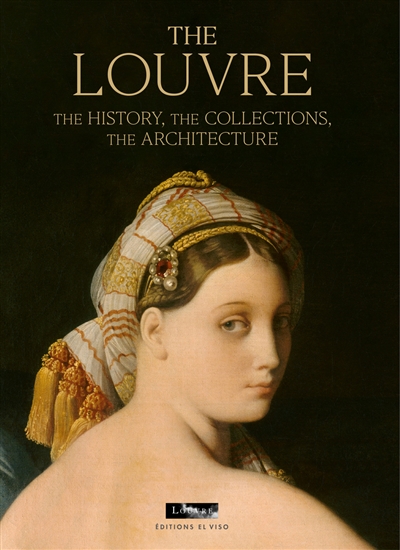en savoir plus

Permet à tous ses détenteurs d'obtenir 5% de réduction sur tous les livres lors du retrait en magasin (réduction non cumulable avec les réductions de type étudiant).
Offre également un certain nombre d'avantages auprès de nos partenaires.
Avec les favoris, retrouvez dans un espace les sélections effectuées au fur et à mesure de vos navigations dans le site.
Constituez pour votre usage personnel vos listes de livres en prévisions d'achats futurs et votre sélection d'articles, dossiers, événements, vidéos ou podcasts préférés ou à découvrir plus tard...
Il suffit simplement de cliquer sur "Ajout Favori" sur chaque page qui vous intéresse pour les retrouver ensuite dans votre espace personnel.
Requiert un compte Mollat
Requiert un compte Mollat
The Louvre : the history, the collections, the architecture
Auteur : Geneviève Bresc-Bautier
Auteur (photographe) : Gérard Rondeau
en savoir plus
Résumé
Forteresse datant du XIIe siècle, lorsque Philippe Auguste Auguste veut protéger sa nouvelle capitale, le Louvre devient résidence royale sous Charles V puis siège de l'Académie royale de peinture et de sculpture en 1692. En 1793, il est le premier musée national ouvert au public. Le point d’orgue de ces siècles de transformation demeure la création de la pyramide dans les années 1980. ©Electre 2025
Quatrième de couverture
Every year, millions of visitors from around the world walk the Louvre Museum's 68,000 square meters (731,945 sq ft.) of galleries that offer more than 35,000 works of art to the public. With the addition of the Department of Islamic Arts and the creation of the Louvre-Lens (2012), followed by the opening of the Louvre Abu Dhabi (2017), the Louvre has established its place as the world's leading museum. This fascinating volume retraces the history of this important heritage site and the evolution of how its prestigious collections developed, through a rich iconography.
A fortress in the Middle Ages, then home to the kings of France, the Louvre is the setting for eight centuries of history. Its origins date back to the twelfth century, when King Philippe Auguste decided to protect Paris, his new capital, by providing it with a fortress on the right banks of the Seine. With Charles V, the Louvre became a royal residence, which the Valois and Bourbon rulers continued to expand, develop, and embellish, as did Napoleon. I, Napoleon III, and the Republic. The most brilliant architects, sculptors, and painters were called to work there - illustrious names such as Jean Goujon, Claude Perrault, Louis Le Vau, Nicolas Poussin, Charles Le Brun, Eugène Delacroix, and Jean-Baptiste Carpeaux. Home to the Academies of Painting and Sculpture and the residence of many artists in the eighteenth century, the Louvre confirmed its vocation as a temple of arts with the opening in 1793 of the Museum of Arts, the first national museum open to the public. From then on, its collections, which originated from the royal collections, would continually be enriched as acquisitions, archaeological discoveries, donations or bequests were made. In the 1980s, the « Grand Louvre » project, symbolized by the famous pyramid by I.M. Pei, is a culmination of these centuries of transformation. This fascinating story is told through the vivid text of Geneviève Bresc-Bautier, accompanied by the remarkable photographs of Gérard Rondeau.
Fiche Technique
Paru le : 18/06/2020
Thématique : Equipements culturels
Auteur(s) : Auteur : Geneviève Bresc-Bautier Auteur (photographe) : Gérard Rondeau
Éditeur(s) :
Louvre éditions
El Viso
Collection(s) : Non précisé.
Série(s) : Non précisé.
ISBN : 978-84-120107-0-1
EAN13 : 9788412010701
Reliure : Relié sous jaquette
Pages : 615
Hauteur: 34.0 cm / Largeur 24.0 cm
Épaisseur: 5.3 cm
Poids: 3833 g

